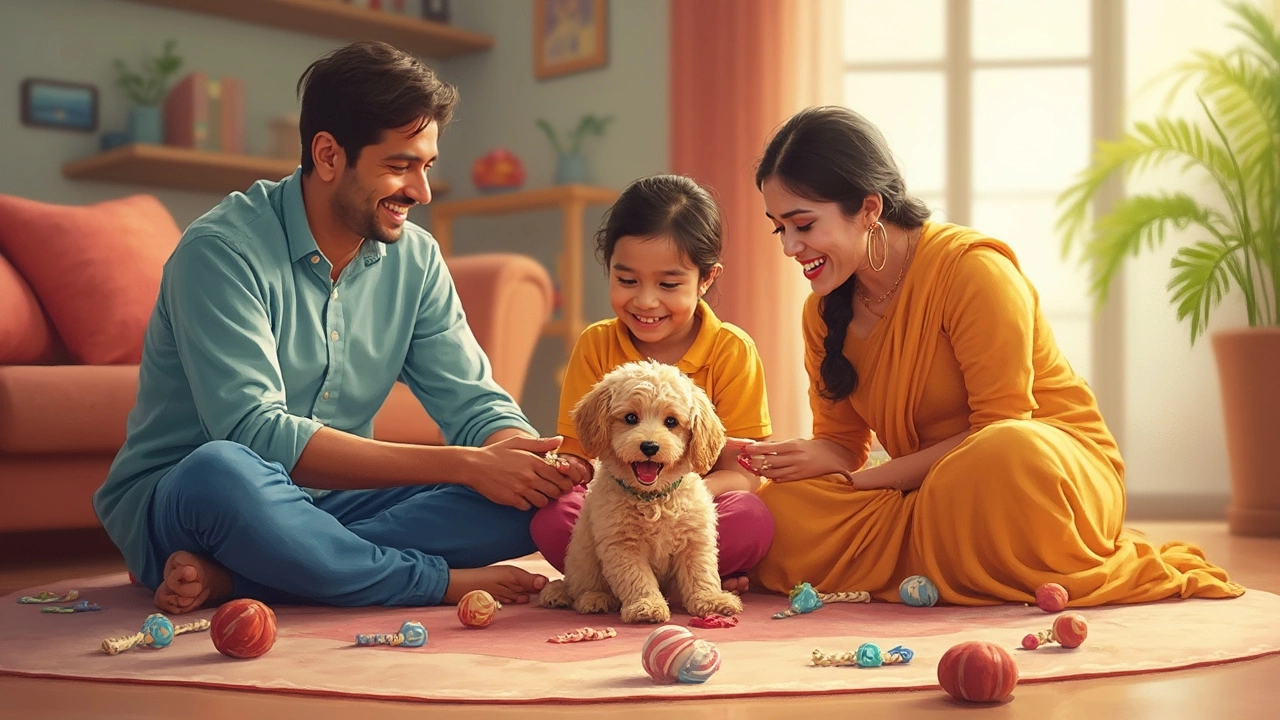Teething Puppies: Fast Relief & Simple Care Tips
Got a puppy that’s chewing everything in sight? It’s probably teething. During the first four months a puppy’s baby teeth fall out and adult teeth push through. The whole process can be painful, which is why they start gnawing on anything they can find. The good news? You can calm the discomfort and protect your home at the same time.
Why Puppies Teethe and What to Expect
Teething kicks off around three weeks old and peaks at about eight weeks. You’ll notice drooling, swollen gums, and a sudden urge to chew. Baby teeth start to loosen around the six‑week mark, and by four months most of them are gone. The new adult teeth are sharper, so they’re more likely to cause gum soreness if you don’t give your pup something safe to bite.
Every puppy is different. Some chew for a few days, others go nonstop for weeks. The key signs are more chewing, whining when you touch the mouth, and a tendency to rest with the head tilted. If you see blood or a bad smell, call your vet – it could be an infection.
Easy Ways to Calm a Teething Pup
1. Choose the right chew toys. Look for toys that are soft enough for baby teeth but durable enough for adult teeth. Frozen rubber rings, damp washcloths twisted into knots, and dental bones made of nylon work well. Freezing a toy for 15 minutes numbs gums and makes chewing more satisfying.
2. Use chilled foods. Offer a spoonful of plain yogurt, a slice of cucumber, or a bite‑size carrot straight from the fridge. The cold helps soothe swelling, and the texture gives a gentle massage.
3. Offer a teething ring. You can make one at home by soaking a clean, wet towel, rolling it up tight, and freezing it. The towel provides a soft surface while the cold eases pain.
4. Keep a routine. Puppies thrive on consistency. Schedule chew time after meals and before bedtime. When they know when to chew, they’re less likely to gnaw on shoes or furniture.
5. Praise the right behavior. Whenever your pup picks a safe toy, give a happy voice, a treat, or a quick belly rub. Positive reinforcement teaches them what’s okay to chew.
While you’re busy soothing your puppy, protect your home. Use bitter‑tasting sprays on cords and furniture legs. Move objects out of reach and baby‑gate off rooms where you can’t supervise.
If the teething phase seems unusually long or your pup refuses all toys, schedule a vet check. Sometimes a puppy needs a quick dental exam to rule out stuck teeth or gum issues.
Remember, teething is a short, noisy chapter. With the right toys, cold foods, and a steady routine, you’ll help your puppy get through it with fewer chewed‑up shoes and a calmer smile.

Best Chews for Puppies: What Vets Actually Recommend in 2025
Vets share what puppies should really chew on, with genuine advice for teething, safety, and happy pups. Learn which toys and treats actually work.
read more
Safest Puppy Chew Toys: What Should Your Puppy Really Be Gnawing On?
Figuring out what’s actually safe for a puppy to chew on can be confusing, but making the right choice matters for their safety and your peace of mind. This article breaks down which chew toys and materials are safest for growing pups and shares tips for picking what works best at different ages. Discover which things to avoid, why some toys are surprisingly risky, and smart ways to help with teething pain. You'll get real-world advice from a fellow dog parent, plus expert-backed info to keep your puppy happy and healthy.
read more



